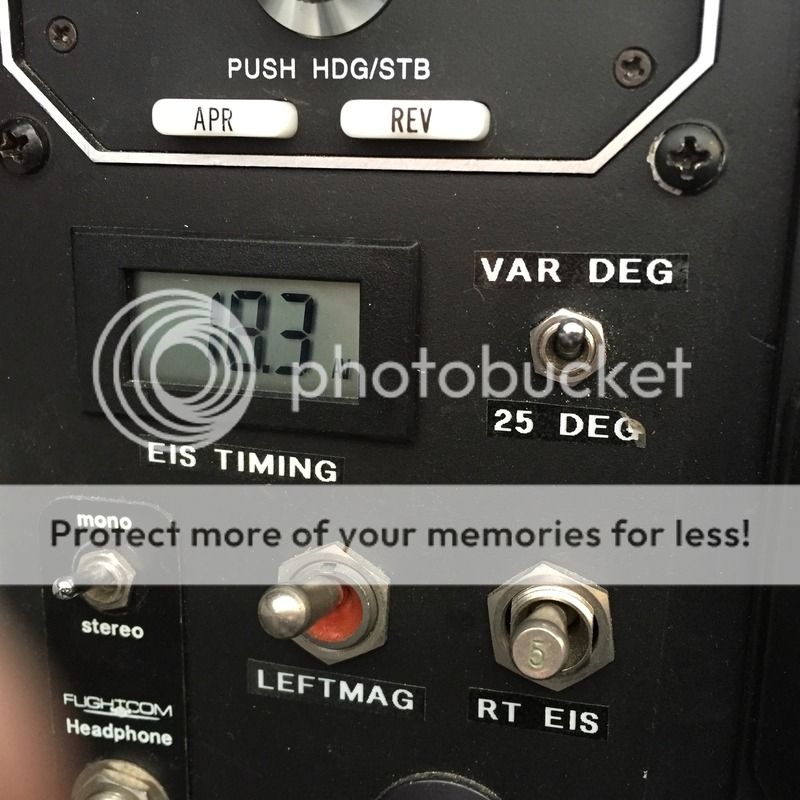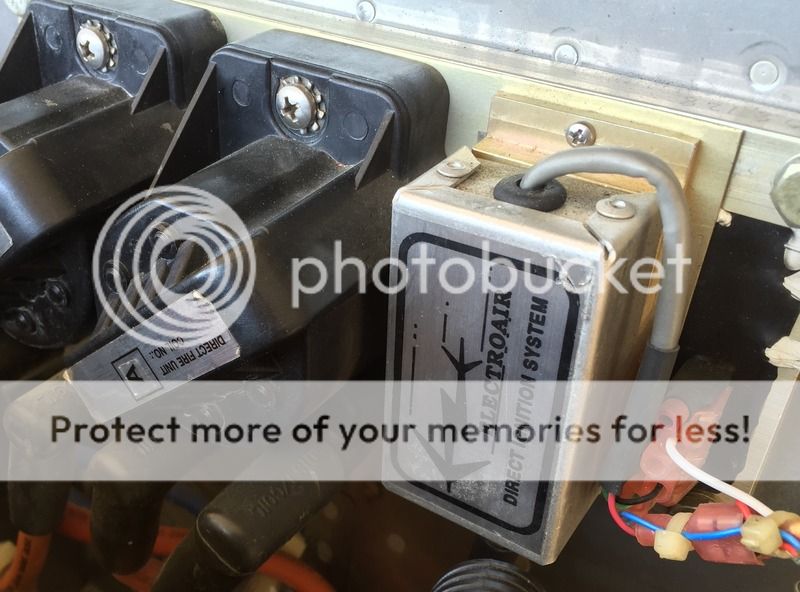Hi, I just bought an RV6A which has a Jeff Rose Electroair setup in place of the right mag. The builder installed the Advance Meter with a toggle switch so you can turn the unit off to the default 25 degrees.
it doesn't seem to be working the way I would expect. The manual says that the unit is set at zero advance when RPM's are below 500 (to aid starting). Given this, I would expect to see "0.0" on the meter with the engine stopped. I'm seeing about 18.7. With the engine running at idle, the value is about 21. If I turn the switch off, I see 18.9. I should see 25 with the switch off. Correct?
My RPM drop when switching to the EIS during runup is about 175, and the engine runs a bit rough. I'm going to check the lower plugs, but I'm still thinking these meter readings are not correct and that there's a problem with the unit. If so, would the problem be in the module? Can these older units be repaired?
Thanks for the help.

it doesn't seem to be working the way I would expect. The manual says that the unit is set at zero advance when RPM's are below 500 (to aid starting). Given this, I would expect to see "0.0" on the meter with the engine stopped. I'm seeing about 18.7. With the engine running at idle, the value is about 21. If I turn the switch off, I see 18.9. I should see 25 with the switch off. Correct?
My RPM drop when switching to the EIS during runup is about 175, and the engine runs a bit rough. I'm going to check the lower plugs, but I'm still thinking these meter readings are not correct and that there's a problem with the unit. If so, would the problem be in the module? Can these older units be repaired?
Thanks for the help.






